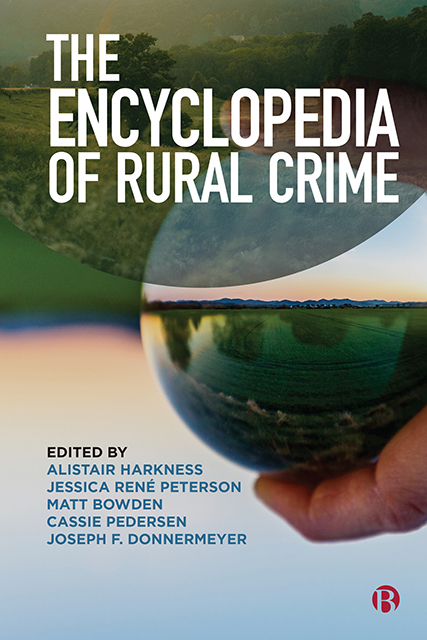Book contents
27 - Tourism, Crime and Rurality
Published online by Cambridge University Press: 20 June 2023
Summary
The dominant images of tourism are romanticized visions of majestic mountains, azure oceans, white sand beaches, historic monuments, grand examples of architecture, exotic cultural settings and, of course, a happy, smiling tourist couple or parents with children in-hand, enthralled by the wonders before them. Nowhere in a brochure is there an image of a tourist frantically searching for his attaché case which housed his laptop, stolen whilst he waited in line to register at a hotel, or the panicked visage of a woman whose wallet is missing from a purse slung over her shoulders whilst she stood with a group of her friends about to board an excursion boat – both were the victims of well-trained and experienced thieves, individuals whose presence is as ubiquitous as the attractions themselves.
As Jones, Barclay and Mawby point out (2012), where there is tourism there will be crime. There should be nothing unusual about that observation, because all human endeavours display examples of deviance and crime. Further, as noted by many scholars interested in the criminological dimensions of tourism (see Sharpley and Stone, 2009), a great deal of tourism itself makes money off of heinous crimes, such as tours of the streets of London where Jack the Ripper stalked his victims in the late 1880s, or the house where Lizzie Borden allegedly killed her parents with an axe in the town of Fall River, Massachusetts (there is even a children’s rhyme about that case).
One distinction to be made is the difference between leisure and tourism (see Botterill and Jones, 2010). A leisure activity, such as sitting at a table in one’s backyard reading a book on a warm sunny day, or building a snow fort with one’s children in the bright whiteness of newly fallen snow, is not tourism, but is certainly leisure. Tourism requires travels away from one’s abode or usual surroundings to new places where new things can be seen and new experiences can be gained – and where new risks can be encountered.
As White points out (see Raymen and Smith, 2019, chapter 13), although crimes related to tourism can happen anywhere, a great amount of the crime–tourism relationship is within the context of a rural environment, from small, quaint, historic towns to remote, rugged regions of the world.
- Type
- Chapter
- Information
- The Encyclopedia of Rural Crime , pp. 108 - 110Publisher: Bristol University PressPrint publication year: 2022

